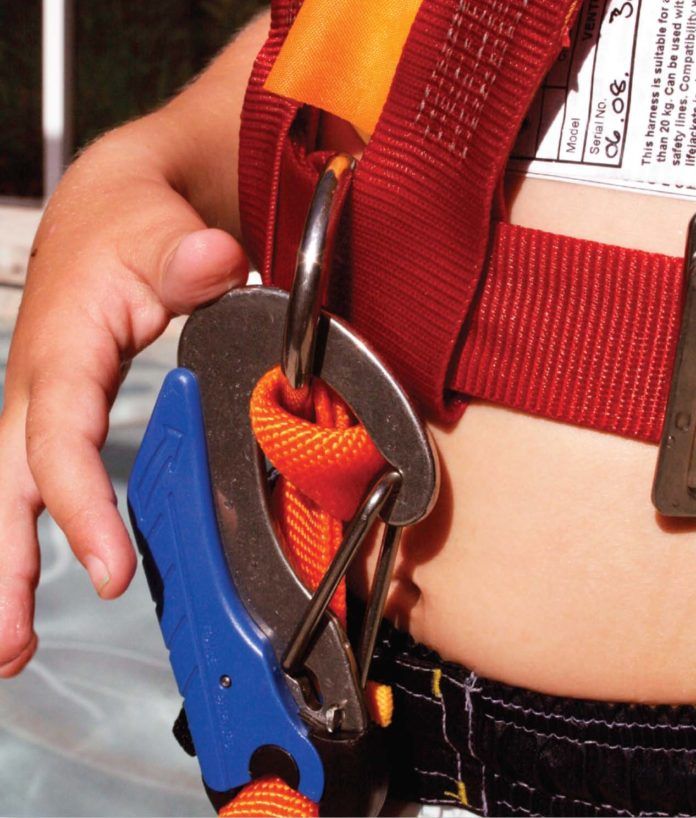Never mind what your experience tells you. Children do not go to sea. At least that is the only logical conclusion we can reach as we deal with the lack of adequate offshore safety equipment for kids.
In October 2006, we ran down more than a dozen life jackets for infants and toddlers. There were only a few worth writing about, and none met our full expectations. Of the lot, we pegged the MTI Adventurewear Bay Bee 201-1, the Mustang Survival MV-3150 and MV-3155, and the Sospenders 12ACH as standouts, and all of these products are still available today.
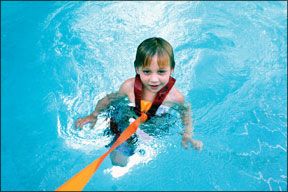
In the December 2006 and January 2007 issues, we dug into the topic of safety harnesses and tethers, and the outcome was worse. One product in that test, a safety tether designed for children more than 50 pounds, snapped under the load of a 35-pound weight being dropped from six feet. The tether, from Jim Buoy, underwent an upgrade immediately after our report.
The only safety harness that we found acceptable for children was a complicated tangle of webbing sold by West Marine. Wed rather deal with a hank-on jib at the end of an 8-foot bowsprit than wriggle a child into that harnesss crossover shoulder straps, but at least it didnt break under load. One nice feature of the West Marine model was the crotch strap, something that we found essential in PFDs for small children. A childs flexible joints and limbs seem designed to slip out of wearable safety equipment, and applying knowledge about fitting adult PFDs to those for children is a losing battle.
What We Tested
Crewsaver, a British company that specializes in a wide range of recreational and commercial safety gear, has generally done well in our safety product reviews, so when we heard about its Venturer child safety harness and tether, we requested
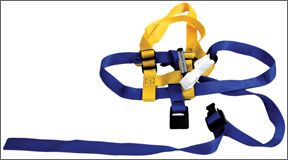
them for testing. The harness is, by far, the most rugged childrens safety harness we have seen. The harness is made of 35-millimeter nylon webbing with a 4,000-pound breaking strength, and stainless-steel adjustment and closure buckles. A stainless-steel D-ring serves as the tether attachment point.
The harness comes in two chest sizes: 16 to 24 inches and 22 to 32 inches. It is designed so that it can be worn forward or backward, so the tether can serve as a “leash” for waterfront strolls with a toddler as well as a tether at sea.
The tether is 4 feet long (most adult harnesses are about 6 feet) and attaches to the harness with a cow hitch (see article on facing page for more discussion on this), making it impossible for the child to detach himself from the tether while he is clipped in. At the boat end of the tether is the common Wichard hook, a rugged clip that requires a relatively strong grip to manipulate (January 2006 and May 2009).
How We Tested
We tested the Crewsaver harness in various situations one would expect to encounter on a boat or onshore, checking it for comfort and fit on children ranging from 35 to 50 pounds. Two children were subjected to a series of pool tests, including lifting and dropping and dragging in the water-a perfect exercise for a hot summer day. We did not do a break test on the tether, but identical tethers have withstood our dynamic load tests of 1,000-plus pounds.
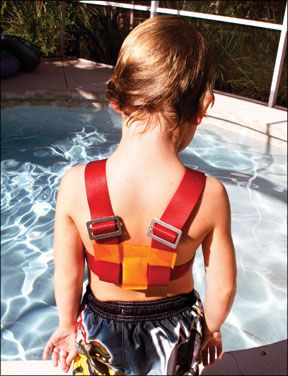
Conclusion
The parallel, no-tangle design is the best thing going for this harness. The wide straps add weight, but make it easier to don and are more comfortable under load than the narrow straps on the West Marine harness. Contrasting stitching allows for easy quality inspection.
Careful fitting is essential for this (or any) harness to perform well in an emergency. Testers found that harnesses that appeared to fit snug on land were loose under load in the water. It is important that the chest strap rides high and close under the childs armpits, leaving no room for the child to slip out. Although the child seemed secure during the more vigorous water testing, we would recommend a crotch strap for all safety harnesses for children, just as we do for infant and toddler PFDs. If a crotch strap is used, it should not impede head-up orientation when the harness is under load.
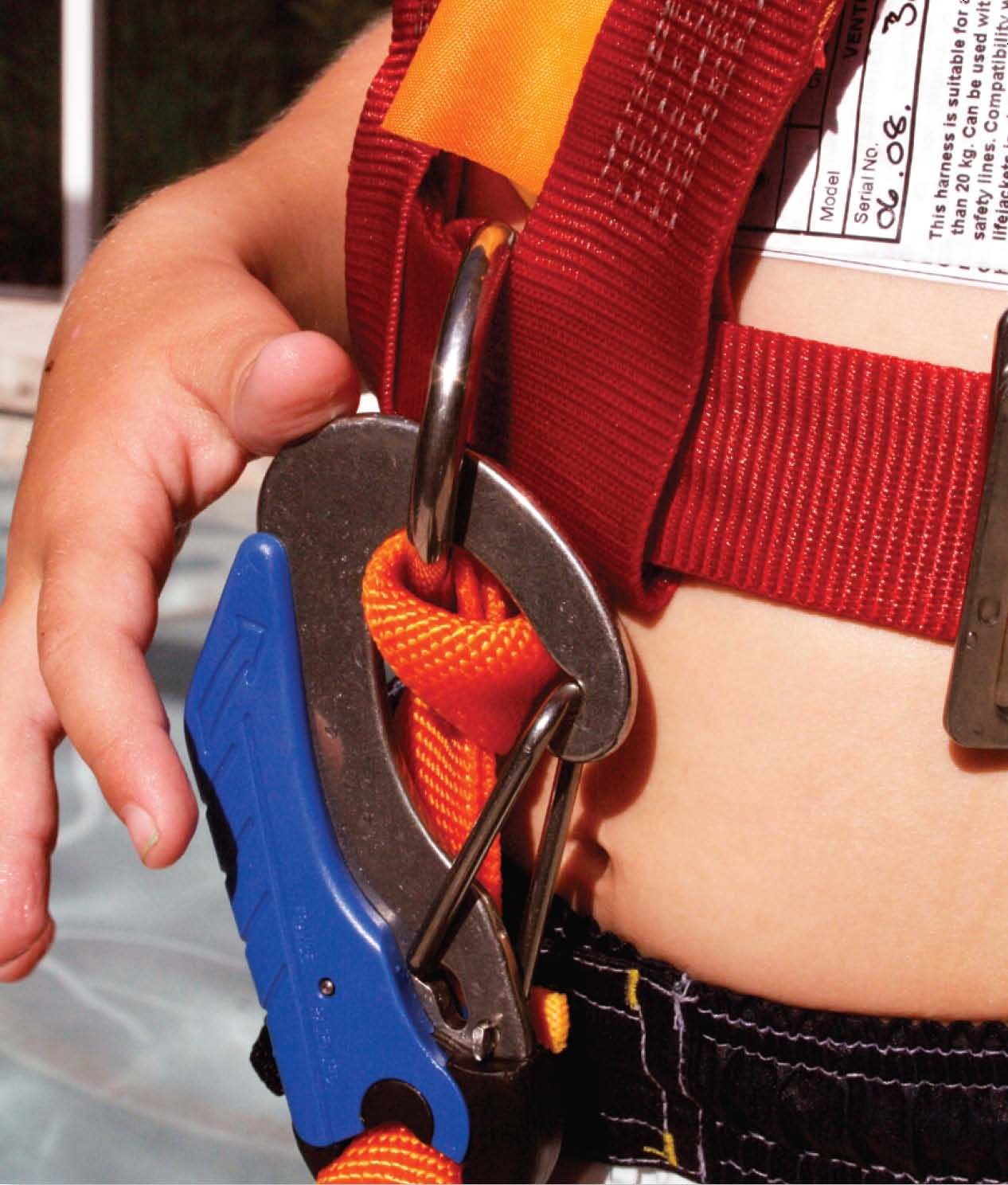
Bottom line: The $70 Crewsaver kids harness is the best built and designed safety harness for children that weve come across, but it has shortcomings. It is heavier than the West Marine harness, and the flat buckles have sharp hard edges that can dig into skin.
The $70 tether also needs improvement. For older children, who might be clipping themselves in, the Wichard is a poor choice of clips. The Gibb-style or Kong clip are preferable as theyre easier to open.
Sadly, if you are serious about getting a good-fitting harness for your child, there arent a lot of options. Some cruisers resort to working with a sailmaker to fashion their own. If you know of an ideal kids harness, wed like to hear about it.





























